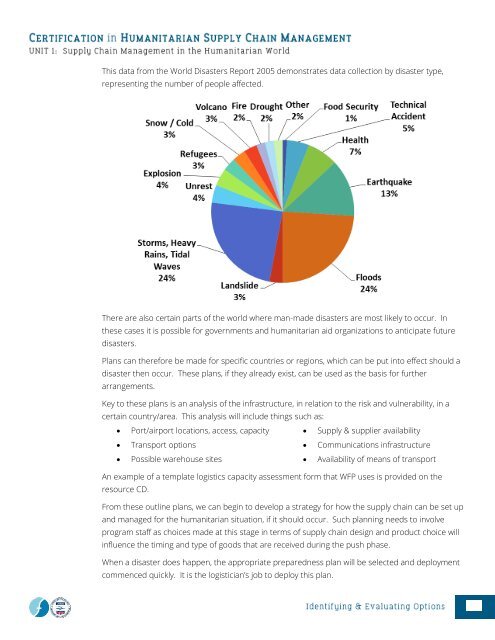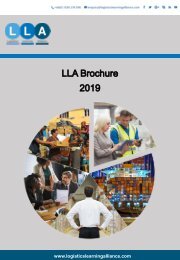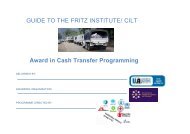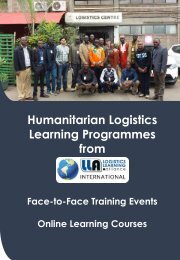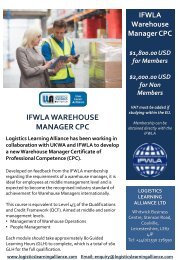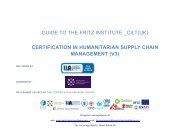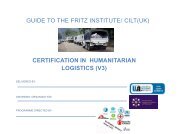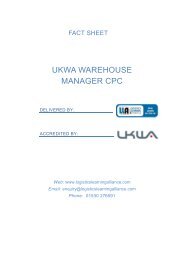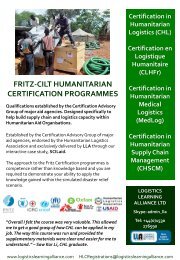CHSCM 3.0 - Unit 1 - SCM in the Humanitarian World
Learning Materials for Unit 1 of the Certification in Humanitarian Supply Chain Management (CHSCM).
Learning Materials for Unit 1 of the Certification in Humanitarian Supply Chain Management (CHSCM).
Create successful ePaper yourself
Turn your PDF publications into a flip-book with our unique Google optimized e-Paper software.
This data from <strong>the</strong> <strong>World</strong> Disasters Report 2005 demonstrates data collection by disaster type,<br />
represent<strong>in</strong>g <strong>the</strong> number of people affected.<br />
There are also certa<strong>in</strong> parts of <strong>the</strong> world where man-made disasters are most likely to occur. In<br />
<strong>the</strong>se cases it is possible for governments and humanitarian aid organizations to anticipate future<br />
disasters.<br />
Plans can <strong>the</strong>refore be made for specific countries or regions, which can be put <strong>in</strong>to effect should a<br />
disaster <strong>the</strong>n occur. These plans, if <strong>the</strong>y already exist, can be used as <strong>the</strong> basis for fur<strong>the</strong>r<br />
arrangements.<br />
Key to <strong>the</strong>se plans is an analysis of <strong>the</strong> <strong>in</strong>frastructure, <strong>in</strong> relation to <strong>the</strong> risk and vulnerability, <strong>in</strong> a<br />
certa<strong>in</strong> country/area. This analysis will <strong>in</strong>clude th<strong>in</strong>gs such as:<br />
• Port/airport locations, access, capacity • Supply & supplier availability<br />
• Transport options<br />
• Communications <strong>in</strong>frastructure<br />
• Possible warehouse sites<br />
• Availability of means of transport<br />
An example of a template logistics capacity assessment form that WFP uses is provided on <strong>the</strong><br />
resource CD.<br />
From <strong>the</strong>se outl<strong>in</strong>e plans, we can beg<strong>in</strong> to develop a strategy for how <strong>the</strong> supply cha<strong>in</strong> can be set up<br />
and managed for <strong>the</strong> humanitarian situation, if it should occur. Such plann<strong>in</strong>g needs to <strong>in</strong>volve<br />
program staff as choices made at this stage <strong>in</strong> terms of supply cha<strong>in</strong> design and product choice will<br />
<strong>in</strong>fluence <strong>the</strong> tim<strong>in</strong>g and type of goods that are received dur<strong>in</strong>g <strong>the</strong> push phase.<br />
When a disaster does happen, <strong>the</strong> appropriate preparedness plan will be selected and deployment<br />
commenced quickly. It is <strong>the</strong> logistician’s job to deploy this plan.


